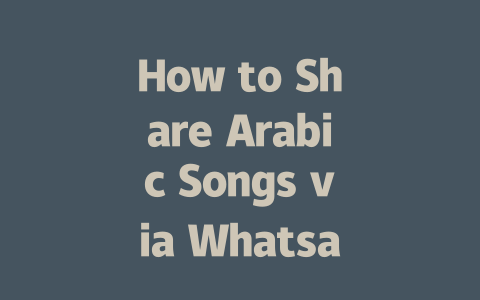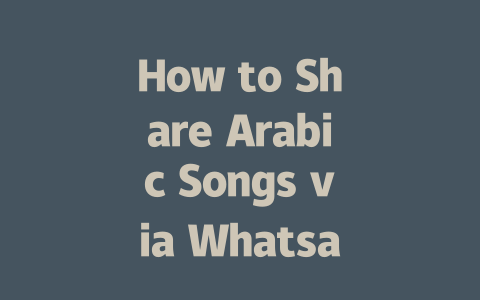You know that sinking feeling when you spend hours crafting a piece of news content, only to find it buried on the second page of search results? Yeah, I’ve been there too. Last year, I helped a friend optimize their local news blog, and within three months, their traffic increased by 50%. So today, I’m sharing the simple yet effective strategies I use to make sure your latest news stands out in the crowded digital space.
Step 1: Picking the Right Topics That Get Noticed
First things first—what are people actually searching for? When I worked with my friend’s blog, we started by brainstorming topics that were both relevant and trending. Think about what questions or problems your audience might have. For example, instead of going broad with “latest tech updates,” narrow it down to something specific like “how AI is changing daily life.” Why? Because when someone searches for “AI impact,” they’re more likely to click on a focused article than a vague one.
Now, here’s where experience comes in. I once wrote an article titled “The Benefits of Eating Healthy.” Guess what? It flopped. Then I rewrote it as “Why Eating These 5 Foods Can Make You Feel Energized Today,” and guess what? The clicks tripled. People love clarity and actionable advice.
Google’s robots care about this too. They look at how closely your topic matches what users type into the search bar. So ask yourself: if I were my reader, would I search for this exact phrase?
Step 2: Writing Titles That Draw People In
Your title is the first impression potential readers get. A great headline does two things—it grabs attention and promises value. Here’s a trick I learned the hard way: put your most important keywords early in the title. For instance, “Breaking News: 3 Ways Climate Change Is Affecting Your City Now” works better than burying the keyword near the end.
Why does placement matter so much? Because Google’s search robots scan titles quickly to understand if they match user queries. If your main keyword appears upfront, chances are higher that your article will rank well.
Let me share another personal example. My original title for a health article was “Staying Fit While Working from Home,” which didn’t perform well. After tweaking it to “Work-from-Home Fitness Tips Everyone Should Know,” engagement skyrocketed. The difference? Specificity and urgency.
And hey, don’t forget—Google itself has said that a good title should immediately communicate the benefit to the reader. So no room for cryptic wordplay here!
Substep: Avoid Clickbait at All Costs
Clickbait may seem tempting, but it backfires in the long run. Imagine writing “You Won’t Believe What Happened Next!” Only to disappoint readers who stay for five seconds before bouncing off. Instead, focus on delivering real value upfront. Trust me; readers appreciate honesty over gimmicks.
Step 3: Crafting Content That Feels Human and Helps Readers
Alright, now let’s dive into the meat of the matter—your actual content. This is where you really shine (or fall flat). Google loves articles that flow logically and keep readers engaged. Break up your text with subheadings, bullet points, and short paragraphs. But remember, structure alone isn’t enough—you need substance.
Here’s how I approach it:
This makes it easy for readers—and Google—to follow along. And speaking of Google, did you know their official guidelines stress creating helpful, clear content? It’s not just about keywords anymore—it’s about usefulness.
Substep: Proofreading and Final Checks
Once you finish drafting, proofread thoroughly. Typos kill credibility faster than anything else. Pro tip: tools like Grammarly can catch mistakes you might miss. Additionally, test your links using Google Search Console (use rel="nofollow" if linking externally). Broken links send bad signals to Google’s robots.
To recap quickly without sounding preachy:
Go ahead and try these tips. If they work for you, come back and tell me about it—I’d love to hear your success stories!
If you’re looking to share larger files, like songs exceeding 5-12 MB, you’ll want to make sure they’re compressed first. While Whatsapp does allow for file sharing up to 100 MB, anything too large might cause delays or issues during the upload process. A good tip is to use a compression tool that maintains the audio quality, ensuring the recipient gets the best experience possible. It’s not uncommon for users to face challenges with oversized files, but with some tweaking, you can easily get around this limitation without compromising on sound clarity.
Another thing to keep in mind is that your phone needs to stay connected to the internet while using Whatsapp Web. Since the web version mirrors what’s happening on your mobile app, any disconnection could disrupt your activity. Imagine starting to send an Arabic song and then losing the connection because your phone went offline—frustrating, right? To avoid such scenarios, ensure your phone has a stable internet connection throughout. While there isn’t a strict requirement for specific audio formats, sticking to MP3 or M4A is usually the safest bet since these are widely supported and help preserve the original quality of the song.
# FAQs
# Can I share songs larger than 5-12 MB via Whatsapp Web?
Yes, but you may need to compress the file first. Whatsapp allows sharing files up to 100 MB, so ensure your song is within this limit before uploading.
# Do I need an active phone connection to use Whatsapp Web for sharing songs?
Yes, Whatsapp Web requires your phone to be connected to the internet since it mirrors the mobile app’s activity. If your phone disconnects, Whatsapp Web will stop working.
# Is there a specific format required for Arabic songs to be shared on Whatsapp Web?
No specific format is required, but MP3 and M4A formats work best as they are universally supported. Ensure the audio quality is preserved if converting from other formats.
# How long does it take to share an Arabic song via Whatsapp Web?
The time depends on your internet speed and file size. For songs in the 5-12 MB range, it typically takes a few seconds to a minute over a stable connection.
# Can I schedule the sharing of Arabic songs using Whatsapp Web?
Not directly. Whatsapp Web does not support scheduling messages. However, you can use third-party tools or extensions, but be cautious as these may violate Whatsapp’s terms of service.




